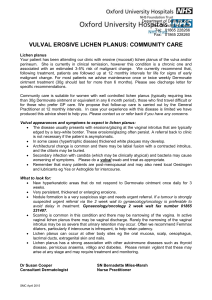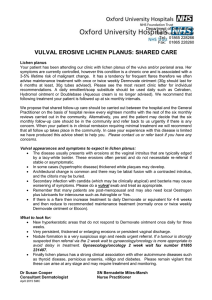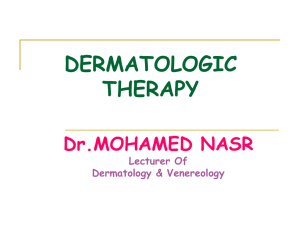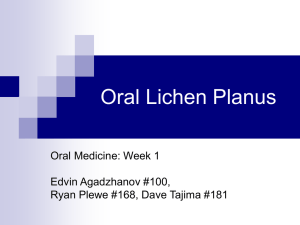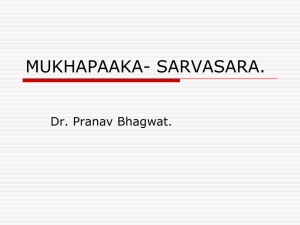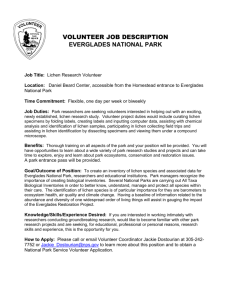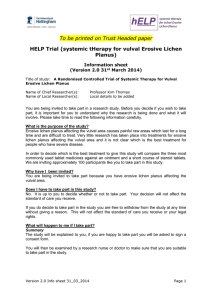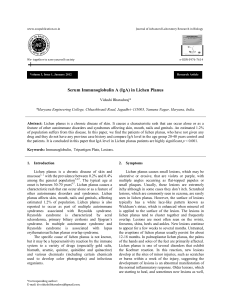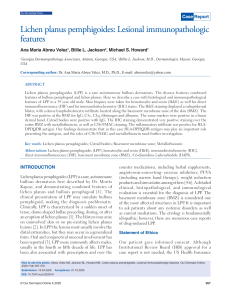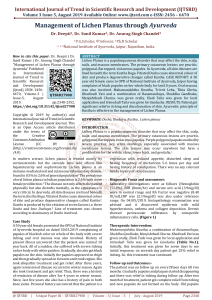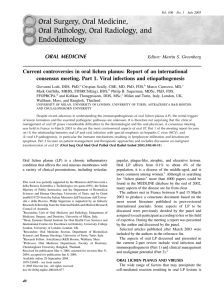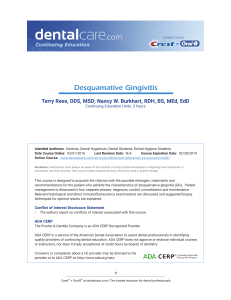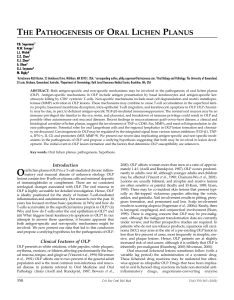White Lesions II
advertisement
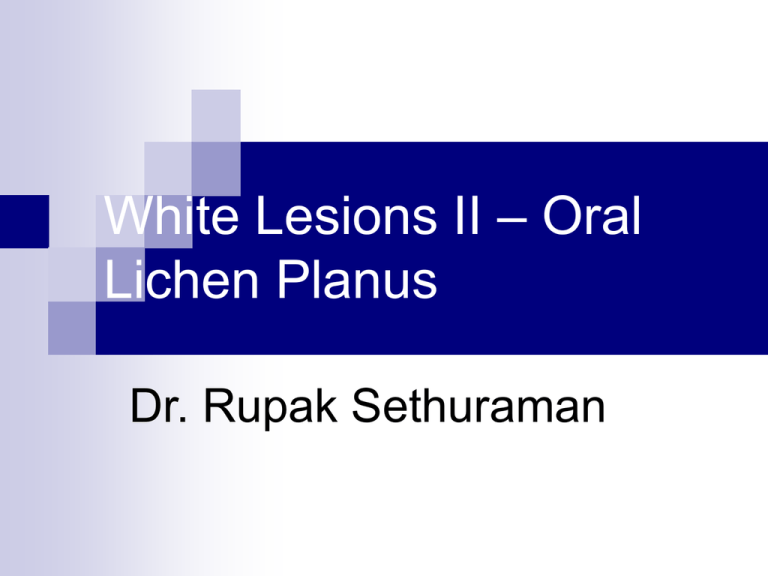
White Lesions II – Oral Lichen Planus Dr. Rupak Sethuraman Specific learning objectives To learn the etiopathogenesis of oral lichen planus. To learn the clinical features, investigations and treatment for oral lichen planus. Format Introduction Etiopathogenesis Clinical features Investigations Treatment Introduction Oral Lichen Planus (OLP/LP) A chronic inflammatory disease that causes bilateral papules, striations or plaques May cause erythema, erosions and blisters Found on buccal mucosa, tongue and gingiva Female: Male ratio: 1.4:1 Mainly seen in adults over 40 years. Etiopathogenesis Purely T lymphocyte mediated inflammatory response. T lymphocytes cause destruction of keratinocyte cells. Types of Lichen Planus 1. 2. 3. 4. 5. 6. Reticular lichen planus Papular lichen planus Plaque type lichen planus Erosive lichen planus Atrophic lichen planus Bullous lichen planus Clinical Presentation Reticular lesions Most common type Interlacing white keratotic lines called Wickham’s striae Typically bilaterally on buccal mucosa, mucobuccal fold and gingiva Less common on tongue, palate and lips Assymptomatic Clinical Presentation Erosive lesions 2nd most common type Mix of erythematous and ulcerated areas surrounded by radiating keratotic striae Similar appearance to candidiasis. Mostly buccal mucosa and vestibule and tongue Symptomatic: Sore mouth sensitive to heat, cold and spices Pain and bleeding on touch 2 Plaque lesions : Resemble focal leukoplakias Vary from smooth flat areas to raised irregular plaques Often multifocal Dorsum of tongue and buccal mucosa INVESTIGATIONS Clinical examination: for reticular LP with characteristic appearance of Wickham’s striae or annular pattern on erythematous background Histological and Direct Immunofluorescent examinations: for plaque and erosive LP because they can resemble other mucosal lesions including malignancy Treatment of OLP Goal: Eliminate exacerbating factors Repair defective restorations or prosthesis Remove offending material causing allergy Diet Reduce painful symptoms Resolution of oral mucosal lesions Reduce risk of oral squamous cell carcinoma Eliminate smoking and alcohol consumption Eat fresh fruit and vegetables Reduce Stress Treatment of OLP Medication Topical corticosteroids 0.05% clobetasol proprionate gel 0.1% or 0.05% betamethasone valerate gel 0.05% fluocinonide gel 0.05% clobetasol butyrate ointment 0.1% triamcinolone acetonide ointment Can be applied directly or mixed with Orabase Treatment of OLP Medication Systemic Prednisone (for 70kg adult) 1mg/kg/d for 6-8 weeks Methylprednisolone 10-20mg/day for moderately severe cases As high as 35 mg/day for severe cases Should be taken in the morning to avoid insomnia Should be taken with food to avoid peptic ulceration Azathioprine – Inhibits synthesis of DNA Steroid Therapy to reduce pain and inflammation Prophylactic use of 0.12% chlorhexidine gluconate may help reduce fungal infection during corticosteroid therapy Alternative Treatment of OLP 0.1% topical tacrolimus ointment 2 times/day Tacrolimus: immunosuppresive macrolide Suppresses T-cell activation Intraoral ulceration resolved after 3 months of daily application Remission for 1 year without maintenance Thank you Any questions???
